Top 15 Myths about Horses
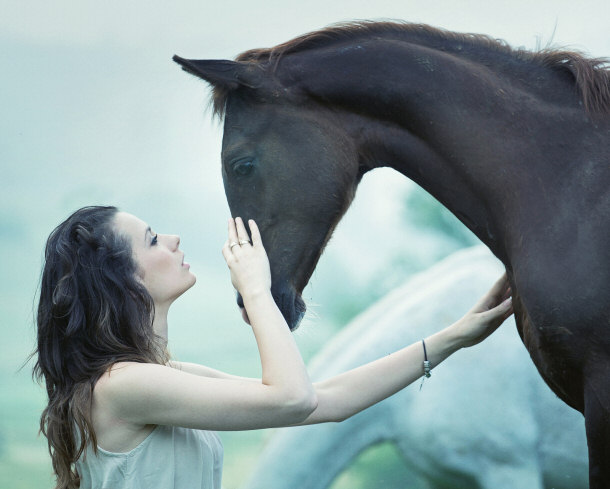
The horse as we know it today is an animal used mostly for hobbies and
sports, though in some specific cases it is still used for work. Throughout the
centuries horses have carried people to war, ploughed the fields and served for
a very long time as the primary means of transportation. Since they've been
around for so long, it's no wonder that certain myths have arised concerning
this animal. There are many untruths regarding all things equestrian which
shroud the facts. Weeding through the myths to get to the truths can reveal some
insightful information about horses, their care and their evolution.
Myth 15) There is
Only One Species of Horse
The Equus genus, to which the horse belongs, has two extant subspecies. This
means that both of these subspecies are still in existence today. The most
commonly known subspecies is equus ferus caballas, which is known as the
domesticated horse. The other subspecies is the Przewalski's horse, which is
native to Mongolia. The latter subspecies was at one point considered to be
extinct but was reintroduced to a nature reserve in Mongolia. According to an
article published in the "International Union for the Conservation of Nature" in
2011, it was stated that there were 300 Przewalksi's horses ranging free in the
wild.
Domesticated Horse
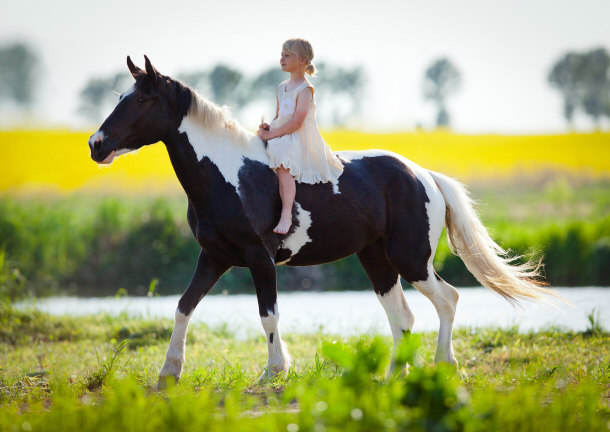
Przewalksi's horse
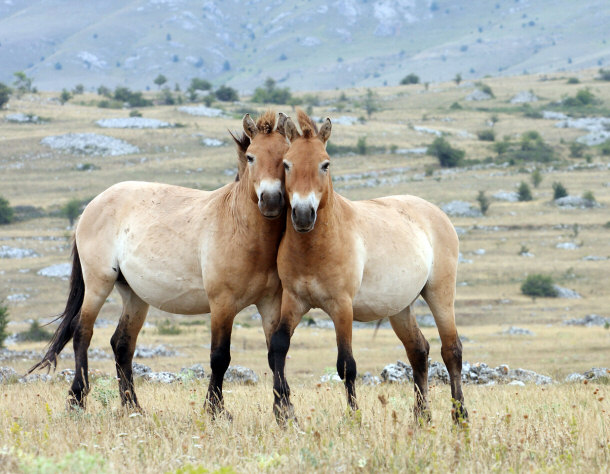
There is an extinct subspecies, as well. This subspecies was known as Equus
ferus ferus or the Tarpan. The last known Tarpan is believed to have died in
Russia in the early 1900s. The name Tarpan is derived from the Kazakh or Kyrgyz
language and means "wild horse". Like the Przewalksi's horse, the Tarpan was an
undomesticated animal. Many attempts have been made to rebuild the phenotype of
the Tarpan but because the breeding stock used during these processes was
sometimes from domesticated stock, every breed created possessed domestic
traits.
Tarpan Horse
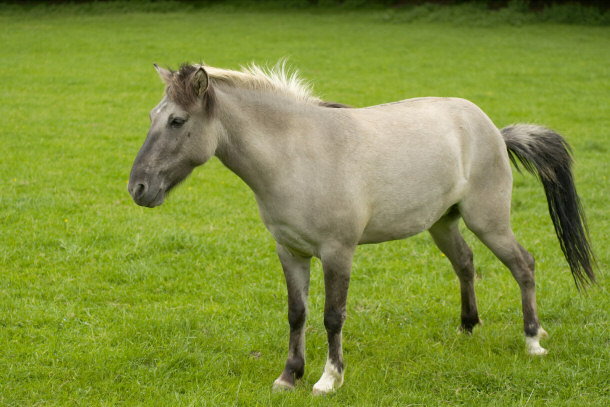
Myth 14) It's Unsafe
to Let Your Horse Graze
This myth is thought to have arisen from new horse owners with overprotective
tendencies that were unfamiliar with the animal. The myth essentially states
that it is dangerous to let a horse feed as it would naturally and that it is
instead better to feed it from a hay net or some other manner of raised feeder.
While this may seem like a silly notion to most people, there are still some
that insist that letting a horse eat as they naturally would is unhealthy.
The fact is that the body of a horse has evolved and is designed specifically
for grazing. When a horse is eating grass, the bottom jaw slides forward to
ensure that the grass is properly grinded. This in turn triggers the appropriate
amount of salivation, which aids in the process of digestion. In truth, it is
unnatural for a horse to eat from a raised feeder. It's highly unlikely that
anything unfortunate should happen if a horse does eats from a raised feeder but
there is always a chance that it could develop digestive or choking problems if
it's made to eat that way all the time.
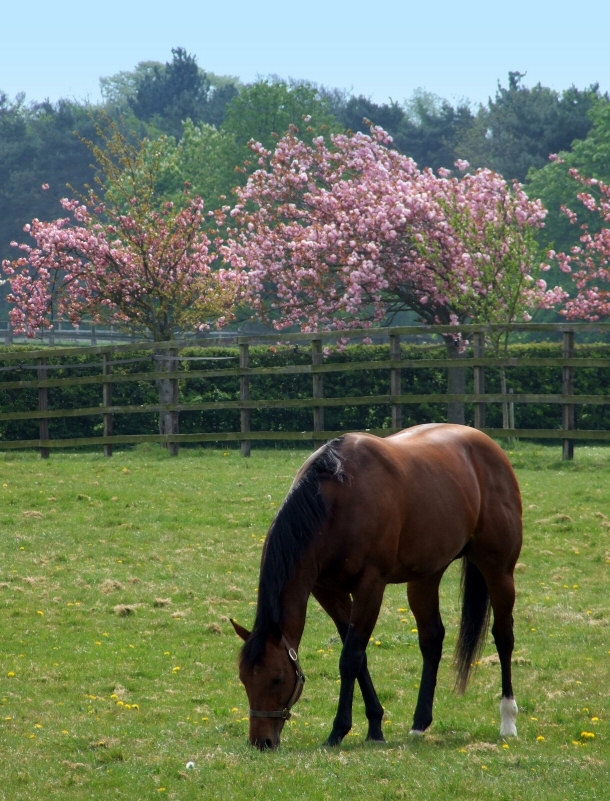
Myth 13) The Quality
of a Horse Can Be Determined By its Color
Horse colorings and markings come into being the same way as eye and hair
colorings do in humans; it's all due to genetics. Some horse colors are more
desirable for breeding than others due to their rarity, such as: cremello, pearl
and silver. There are certain color breeds of horses and the color of a horse
can be more valuable than with other breeds. Palomino, paint, and appaloosa are
three types of colorings that have led to registrations based primarily on said
colorings. Additionally, each coloring can have many different color variations
within its category, with the rarer color types being more highly prized.
Colorings do not determine the conformation or temperament though, which are
two of the most important factors when it comes to deciding the quality of an
animal. With poor conformation, stallions and mares won't be highly sought after
for breeding. A bad temperament can lead to a horse that is mean, cunning, and
unfriendly toward humans. All three of those attributes are less than desirable
for breeders and owners alike.
Silver Dapple
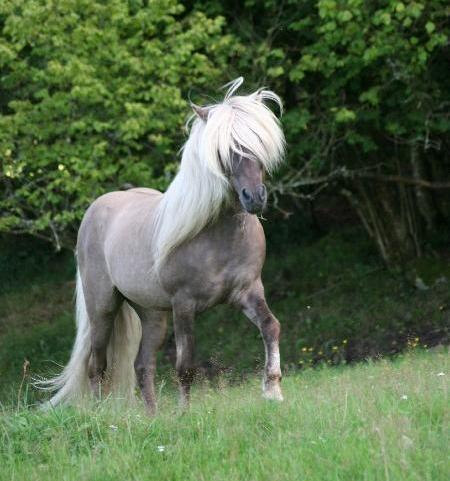
By Kumana,
via Wikimedia Commons
Palomino Horse
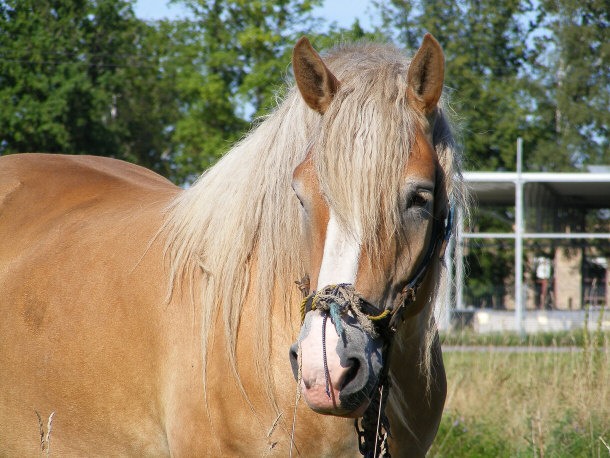
Myth 12) Only Horses
with Spots on Their Rump are Classified as Appaloosas
While the spotted rump is one of the most common images that comes to mind when
picturing an appaloosa, it's not the only type of marking common to that
particular color breed. In fact, the range of markings included in the appaloosa
color classification are numerous and highly varied from each other. This means
that appaloosa horses are among some of the most varied in appearance when it
comes to colorings and markings.
Appaloosas are most commonly identified by having leopard spotted patterns on
their coat or by having a white blanket with dark spots covering their rumps.
Other color variations with appaloosas include snow capped, snowflake, mottled
and roan blanket. A varnish roan can also be classified as an appaloosa
coloring. The varnish roan is a variation of the leopard-spotted appaloosa and
is characterized by having a dark base coat color with some white spotting. As
the horse grows older the number of white hairs in the coat will increase, which
can make the marks blurry or faded completely.
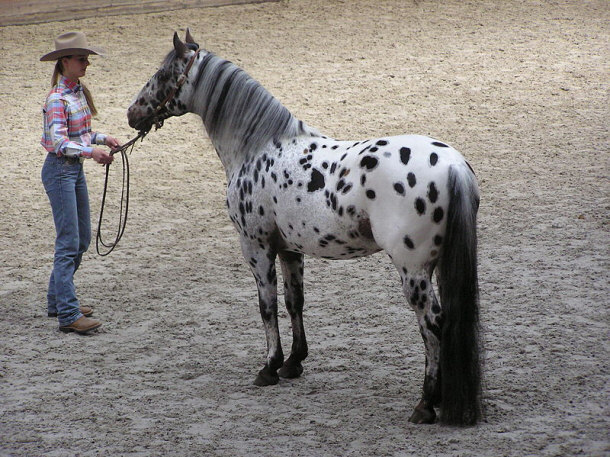
By Karakal,
via Wikimedia Commons
Myth 11) True White
Horses Are Albinos
The fact is that albinism has never been documented in horses but here is a
condition known as "lethal white syndrome" that is often confused with albinism
by those unfamiliar with horses and coloring. Lethal white syndrome is an
autosomal genetic disorder that occurs most frequently within the American Paint
Horse breed. Foals affected with this syndrome will be born with blue eyes and
coats that are completely white or almost entirely white.
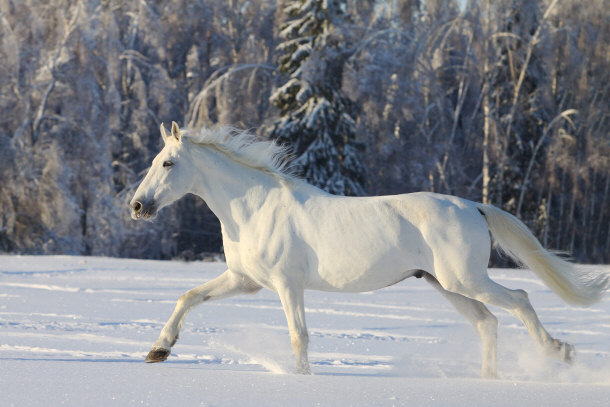
White horses do exist and they are known as having a dominant white coloring.
Dominant white occurs most commonly within two specific breeds, the Camarillo
White Horse and the American White Horse. A horse that is dominant white will be
born with pink skin and a white coat that will not darken as the horse ages.
Contrary to popular belief, horses that are dominant white will commonly have
dark eyes as opposed to blue. Most horses that have blue eyes with a very pale
coat are usually cremello colored or some other type of cream gene coloring.
Myth 10) Hot Blood
and Cold Blood Breeds Have Blood Temperature Differences
This myth is more of a misunderstanding with those not familiar with horses. The
terms hot blood, cold blood, and warm blood refer to the temperament as well as
the types of tasks the horses are best suited for, not their actual blood
temperature. All horses are mammals, therefore they are scientifically
classified as being warm-blooded.
Hot blood horses are generally lean, swift and can be hot tempered; one of
the best representative breeds in this category is the Arabian. Most hot blooded
breeds were developed in the Middle East, such as: the Akhal-Teke and the
Barb. Hot-blooded horses are generally bred for speed, mobility, and a quick
learning capability. Physically, they will have a frame that is slight, thin,
and long-legged.
Cold blood is a term used to refer exclusively to draft horses. These horses
are large of frame, muscular and sturdy. Cold-blooded horses are also known to
have a temperament that is calm, docile, and patient; this earns them the
moniker of "gentle giants". Some of the best known cold blooded breeds include
the Clydesdale, the Percheron, the Belgian and the Shire. Cold bloods are slower
and more powerful than their hot blooded counterparts; they're more suited to
heavy labor.
Warmblood horses came into being through the crossbreeding of cold bloods and
hot bloods. The result was a horse far more refined than a draft horse yet still
possessing its easy temperament. Warmbloods today are mostly used as sport
horses in the world of show jumping, three day eventing, dressage and endurance
racing. Warmblood breeds that are often used in such sporting events include the
Trakehner, the Hanoverian, the Holstein, the Oldenburg, and the Westphalian.
Hot Blooded Akhal-Teke Horse
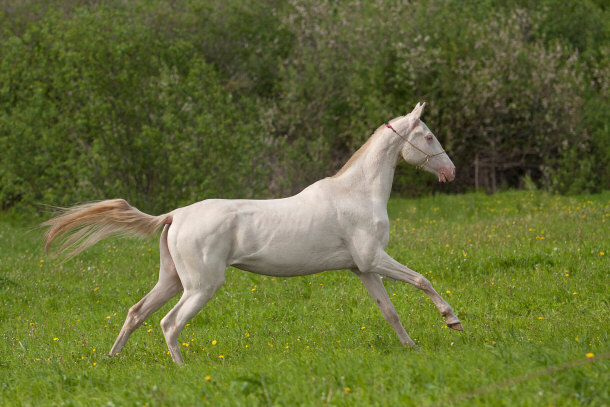
Cold Blooded Clydesdale Horses
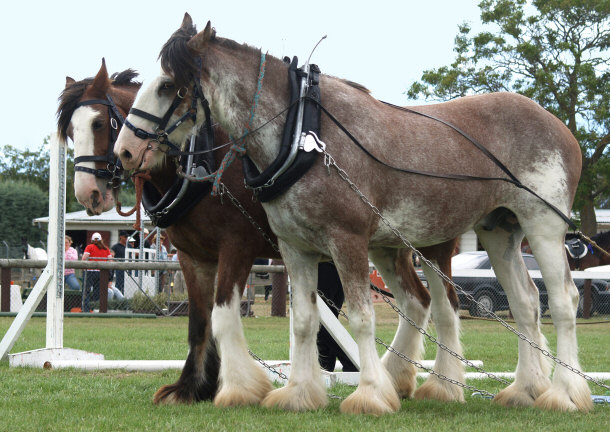
Warm Blooded Westphalian Horse
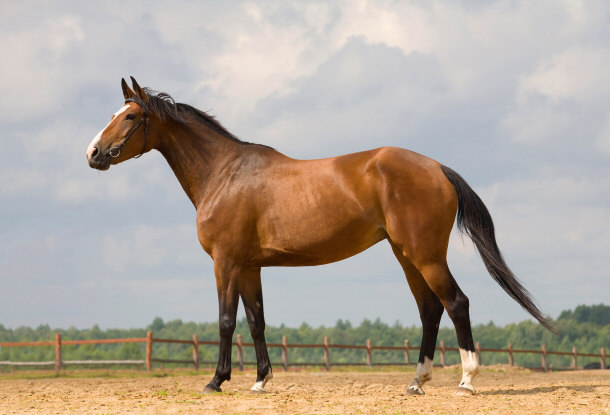
Myth 9) Horses Are
Just Like Dogs
This is another common misconception among those unfamiliar with horses. While
both animals are domesticated, the similarity pretty much ends there. Dogs are
carnivorous, whereas horses are herbivores. The social structure of a herd of
horses varies greatly from that of a pack of dogs. Many might assume that
training horses occurs in the same way one might train a dog, that is an
erroneous assumption. Dog training often begins when the animal is still a puppy
but training a horse for riding or for working in a harness won't occur until
the animal is at least three to five years of age.
Training methods themselves are different with the two animals as well. You
will train a dog to perform tricks, to stop barking and to behave. Horses must
be trained to tolerate a human presence on their back, to respond to cues from
the rider's legs, thighs, and touch on the reins. The amount of trust needed for
this type of training is monumental, making the training time of a horse lengthy
and complicated. Additionally, training a horse will always have some element of
danger because the horse is a mammal that can weigh up to 800 pounds and can
spook easily.
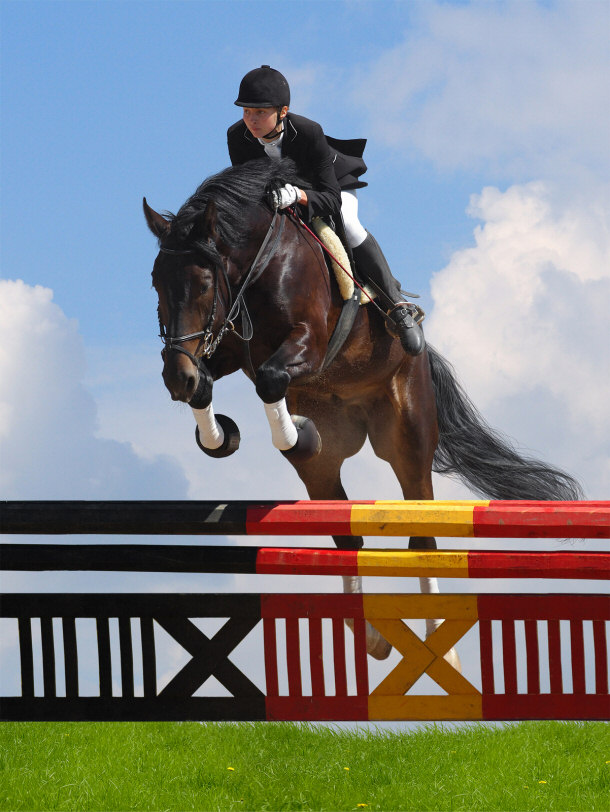
Myth 8) A Horse Will
Run Into a Burning Barn
There is some debate over this particular myth because barn fires still happen
today and the observations made by those in attendance are that behavior differs
depending on the horse. In many cases, some horses would refuse to leave their
stalls even as the barn burnt around them. While the real reason for doing so is
unknown, many speculate that the stalls where they spent a lot of time in are
what they saw as a safe location. Some horses have in fact run back into a
burning barn after being led to safety. It's assumed that they do so for the
same reason that the barn is what they regarded as a safe haven. In other
circumstances, horses that were freed from a burning barn fled the area
entirely.
How a horse will act in an emergency situation is unpredictable, therefore
many fire departments are willing to work with horse owners who have barns in
order to institute escape plans when it comes to the animals. Wooden barns are
obviously the most prone to fire and it's recommended when building one to take
into account the possibility of a fire then certain fire safety allowances can
be made during construction.
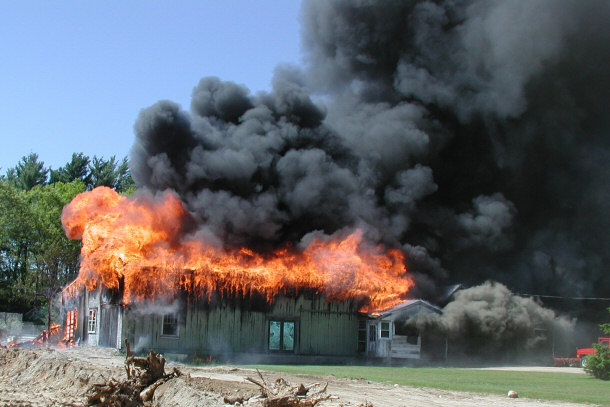
Myth 7) Horses
Require Little Attention and Care
Anyone who owns horses for riding, breeding or as pets will tell you that horses
require a great deal of attention and care. Like any animal, a domesticated
horse needs to eat. They are just as prone to illness, disease and injury just
like any other animal. Horse hooves must be attended to and should be
trimmed regularly. If the horse is going to be ridden over rocky or hard
terrain, it's advisable that they be shod. If a horse travels frequently to
shows, races or other types of competitions then it will need to be vaccinated
against diseases, such as: equine encephalitis, West Nile virus, rabies
and rhinopneumonitis. In addition to all their other shots, horses need to be
given de-worming medication multiple times a year.
Horses are prone to accidental injuries, much like other animals and humans.
It is common for horses secured within any type of wire perimeter to sustain
injuries from the wire, ranging from mild to serious. Injuries can also be
incurred from other horses. Treatment for injuries can range in difficulty with
minor wounds being treatable by the owner and major wounds requiring the
services of a large animal vet.
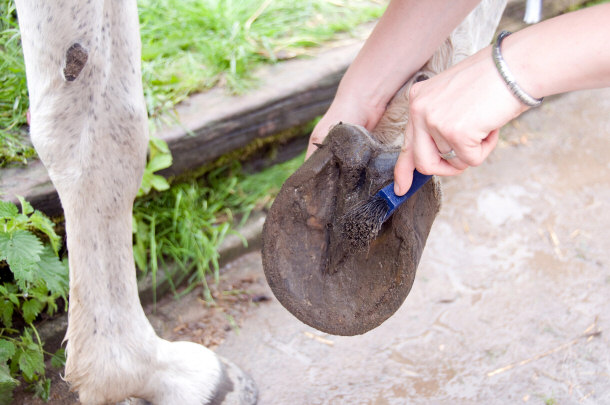
Myth 6) Horses Don't
Mind Being Worked Hard
It's another common misconception to think that because a horse is an animal,
it's all right to push it to its physical limits often. The truth is that horses
get tired, sore and grouchy just like people do. Proper horse care includes
realizing when your horse needs a break from whatever task it's performing,
regardless of whether it's a sport competition or a leisure ride. Horses that
trust and have formed a strong bond with their rider will often give all their
effort in their performance. However, it's important to realize that horses tire
just as easily as humans. By giving the animal a break and rewarding it for all
its effort, a rider can go a long way toward ensuring further good behavior.
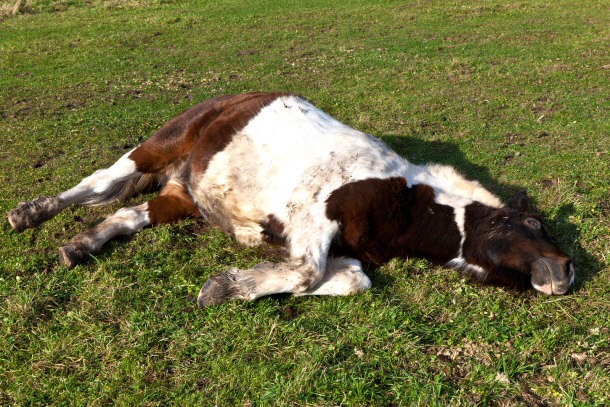
Myth 5) Riding a
Horse Requires No Skill
Anyone who has ever ridden a horse knows it requires skill and depending on what
manner you're riding, it can require a great deal of skill. Leisure trail riding
is one of the simplest equine activities and while it doesn't require an
enormous amount of skill it does require situational awareness along with being
able to read the animal's mood as well as body language. With equine sports such
as three-day eventing, show jumping, or dressage, skill becomes more paramount
as the activities are more complicated and physically demanding. These sports
don't only require the rider to be in top physical shape but they also demand
that the rider be aware of their mount, the surroundings and the plethora of
cues that must be given in order to make the horse perform the actions needed.
Riders that compete in these types of equine sports have often spent many years
training in order to do so.
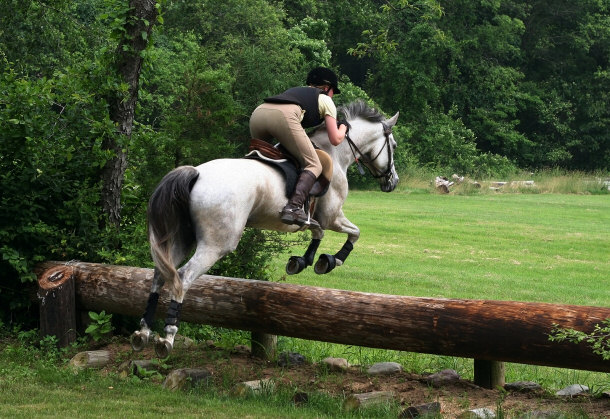
Myth 4) Horses
Always Sleep Standing Up
While horses do in fact slumber while standing, they can also sleep while lying
down. When standing, a horse will lightly doze. This is an evolutionary
adaptation to being prey when in the wild because lying down to sleep will
render the animal more vulnerable to predators. Horses have a physiological
aspect to their bodies that allows for the relaxation of their muscles while
lightly sleeping that won't lead to a collapse. There is a locking device in all
four legs that allows this to be possible.
Horses do however need to enter REM sleep, just like humans do. They cannot
achieve that state while standing, so horses therefore sleep lying down as well.
A horse will only need to lie down for a couple hours every four to five days to
ensure they are getting the minimum of REM sleep they require. Also, they rest
easier in groups than when they are alone because of the inherent predator
instincts they possess.
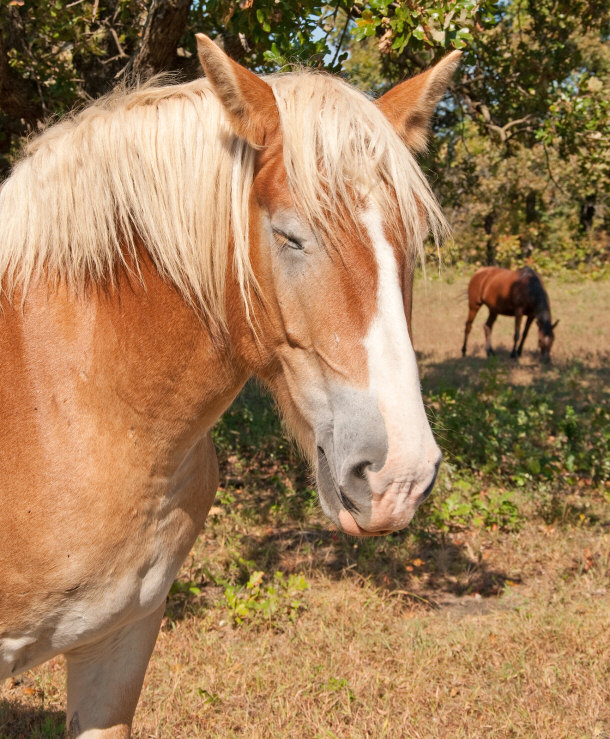
Myth 3) The Training
of Gaited Horses is Always Cruel
Gaited horses differ from other horses in that they have the ability to do what
is known as an ambling gait. An ambling gait is a four-beat gait that is usually
very smooth to ride. Gaited horses are the result of selective breeding programs
meant to produce offspring that have gaited tendencies. Some of the more well
known gaited breeds include the Tennessee Walker, the Missouri Fox Trotter, the
American Saddlebred, and the Peruvian Paso.
Gaited horses will sometimes undergo training to enhance their ability to
perform ambling gaits. Some horses have been trained to perform unnatural high
stepping gaits and it's an unfortunate fact that in some of these situations
cruelty was implemented. However, not all owners or trainers resort to such
tactics and do genuinely care about their animals. There is an unfortunate
negativity that publicity surrounds the training of gaited horses but it is a
misconception that all gaited horse owners, riders and trainers are cruel in
their practices. The truth is that there are many who own as well as ride gaited
horses that treat them with nothing but the utmost respect, love, and attention.
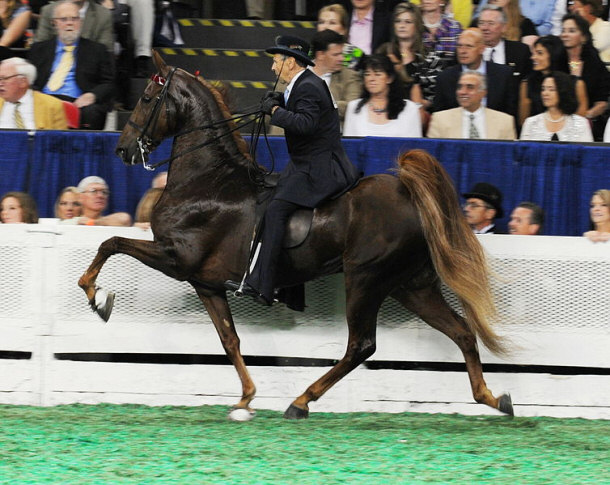
By AkimaDoll,
via Wikimedia Commons
Myth 2) A Horse with
a Broken Leg Must Be Shot
One of the most common myths surrounding horses that has endured for centuries
is that a horse with a broken leg must be put down. In earlier times, this was
most certainly the case because there was no medical technology that could mend
such an injury. Subsequently, many horses were put down because of
fractures in their legs. This grim conclusion is no longer the case because
currently horses with broken legs can receive medical attention.
Unfortunately, broken legs in horses are expensive to mend. The sad reason
why horses with fractured legs are put down is simply because the owner cannot
afford the veterinary operations needed to remedy the issue. However, there are
some options available for those who are financially able that don't include the
barrel of a shotgun. Surgery can be performed on the injured limb and if the
fracture is contained to certain small areas, a cast may be applied. Metal
implants can also be used, just like for a severe limb fracture in a human.
It's always important to take into account the quality of living the animal
will experience once it has healed. A sporting animal that had a fractured limb
will never again be able to perform the way it used to. In addition, there's the
very high possibility that laminitis will at some point afflict the animal.
Additionally, the damaged bone will never be as strong as it was. A horse's legs
are meant to absorb high amounts of shock and a weakened bone may compromise
that purpose, leading to further injury. Ultimately, the decision of whether to
put down an animal with a broken limb needs to be considered from every angle.
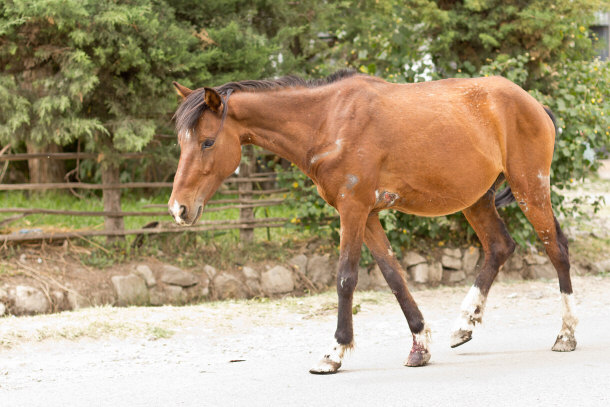
Myth 1) Horses are
Dumb Animals
Horses, like nearly every other type of animal, are not capable of thinking as
humans do. However, it is a mistake to regard them all as being stupid. The
truth is that horses are capable of considerable intelligence and much of the
training that horses undergo is proof of this. If the horse were truly a dumb
animal without the capacity for thought, it wouldn't be used for sport, leisure
or trick riding.
A truly dumb animal would not respond to subtle pressure, voice or hand cues
as trained horses do. Horses are able to recognize as well as form bonds of
trust with their handlers and owners. That trust then becomes a key part of the
complicated relationship between horse and rider. A horse may also possess a
certain brand of cunning, the type which leads to it learning how to manipulate
a latch on a gate, tip over containers to gain access to feed or even drop to
the ground and squeeze under the bottom wire of a fence.
Many people who are new to riding horses may assume that their mount is dumb
because it will not respond the way they want it to right away. However, part of
learning to ride a horse is learning that everything a rider asks it to do will
be a foreign and unnatural experience. Training a horse requires a lot of time
and dedication. Patience with a horse, along with acknowledging and rewarding
its good behavior, is one of the best tactics to use in training.
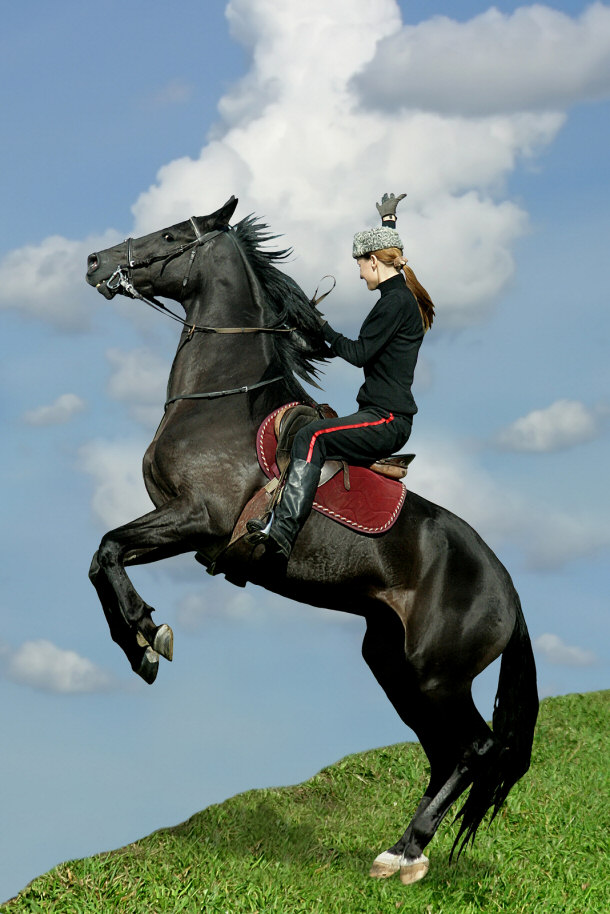
Conclusion
As a companion, horses have been with mankind for many long centuries. Originally being vital for causes such as war and transportation, their
importance has diminished over time with the increasing pace of technology.
Horses have remained popular animals to own for both leisure and sport. Even
those that are familiar with all things equine may still be deceived by some
myths concerning these animals. It's important to recognize and debunk these
myths that have persisted for many years because it could impact a horse's
health, happiness, and longevity.
Nature
Top Lists:
15 Fascinating Facts about the Amazon Rainforest
15 Remarkable Facts About Bacteria
15 Remarkable Facts About Jellyfish
15 Little Known Facts About Elephants
15 Fascinating Facts about Earthquakes
15 Odd And Interesting Facts about Monkeys
Top 15 Myths about Snakes
Top 15 Myths about Horses
Top 15 Creepy Deep Sea Creatures
15 Unexpected Animals That Can Kill You Quickly
Top 15 Spider Myths
15 Beautiful Animals that are Now Extinct
Top 15 Most Amazing Snakes Around the World
15 Fascinating Facts about Snow
Top 15 of the World's Rarest Flowers
10 Most Emotional Animals
15 of the Most Venomous Creatures to Roam the Earth
15 Unusual Animal Defense Mechanisms
15 Unusual and Less Known Uses of Rocks
15 Unique Forest Creatures Less Known To Man
15 Interesting Facts About Time
15 Unknown Parasites You Never Knew Existed
15 Weird Trees Around The World
15 Wild Animals Deadly to Humans
15 Exotic Insects That Are Harmful & Deadly
15 Ridiculous Uses for Gold
Informational:
Preparing for a Disaster
Proof That We Are What We Are!
What is the Meaning of Life?
The Trend and Challenges Facing the Urban World
Creation Narratives and the Evolution Creationist Debate |